MarianVejcik/iStock/GettyImages
Rabbits are famously prolific, making them one of the most widely available small-game animals. Domesticated rabbit, like domesticated chicken, is usually processed while young, tender and mild-flavored. Wild-caught rabbits and hares are variable, but are usually both tougher and more flavorful. Both are very lean and healthy meats that offer a pleasant change from everyday meals. Domestic rabbit is tender enough to roast in the oven, while their tougher wild-caught cousins are better braised.
Roasted Rabbit
Trim away the end of the neck, and the end of each leg from the "knee" joint downwards. This is usually only necessary with wild-caught rabbit, because farmed rabbit is sold trimmed for market.
Remove any internal organs such as the liver or kidneys that might be left inside the body cavity. Rub the rabbit lightly over both its inner and outer surfaces with olive oil or melted butter, then season it with salt and pepper. If your recipe calls for additional herbs or spices, rub or sprinkle them over the rabbit at this stage.
Preheat your oven to 325 degrees Fahrenheit. Place your rabbit in the roasting pan on its side, without a rack. Rabbit is too lean for the drippings to be fatty, and any juices that cook out will help keep the underside moist.
Baste the rabbit every 20 to 30 minutes with more oil or butter to help keep it from drying out. Turn it after 45 minutes, if you wish, to ensure even cooking.
Roast your rabbit until it reaches an internal temperature of 160 F, when tested by inserting an instant-read thermometer into the thickest part of the thigh. The entire process will take approximately 90 minutes with market-weight rabbits of 2 1/2 to 3 pounds.
Braised Rabbit
Remove any internal organs from your rabbit, and trim the neck and legs if necessary. Rub the rabbit's outer surfaces lightly with oil.
Heat a heavy skillet or Dutch oven until very hot, then add the rabbit. Brown the outer surfaces on all sides. The rabbit will likely be too long for your skillet, so you might need to brown first the front half and then the back.
Season the rabbit inside and out with salt and pepper, and any other spices or herbs called for in your recipe. Place it in a roaster or casserole dish large enough to hold the rabbit.
Pour in any combination of water, broth, beer or wine, until the bottom third to half of the rabbit is covered. Cover the pan with its lid or with a sheet of foil, then slide it into a preheated 325 F oven.
Braise the rabbit for three to four hours, or until fork-tender. Turn it after 90 minutes to ensure even cooking, topping up the braising liquid if necessary.
Related Articles

How to BBQ a Rabbit

How to Cook a Deer Neck Roast in a Slow ...
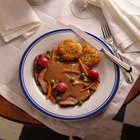
How to Prepare Chuck Tender Roast
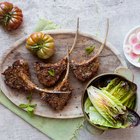
How to Grill Rack of Lamb
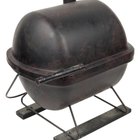
How to Cook Squab

Slow Roasting a Leg of Lamb Until It Is ...
How to Cook Squab
How to Cook a Spencer Roast
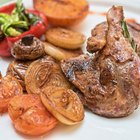
How to Roast a Duck on a Grill

What Are Persian Lamb Coats?
How to Cook a Lamb Square Cut Shoulder
How to Cook Roast Beef in a Cast-Iron ...
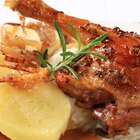
How to Cook a Crispy Duck in a ...
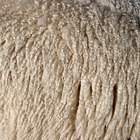
Difference Between Sheepskin & Shearling

What Cuts of Meat Can I Get From Deer ...
How to Cook Boneless Lamb Butterflied ...

How to Cook a Petite Filet of Beef in ...
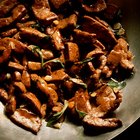
How to Cook Lamb's Fry

How to Cook Tender Rolled Flank Steaks ...
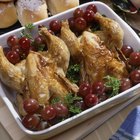
How to Brown a Cornish Hen
References
- On Cooking: A Textbook of Culinary Fundamentals; Sarah Labensky, et al.
- The American Woman's Cookbook, Wartime Victory Edition; Ruth Berolzheimer (Ed.)
Tips
- Tender young rabbit can also be roasted at 425 F for 20 to 25 minutes, giving it a chewier texture but a richer flavor.
- Many traditional recipes call for roasted rabbit to be "barded," or covered with thin sheets of protective fat. This can be thinly-sliced pork back fat or lacy sheets of caul fat, but bacon is easier to find and works well. If a smoky bacon flavor is inappropriate in your dish, ask the butcher to sell you thinly-sliced uncured pork belly instead.
- The braising liquid can be reduced to concentrate its flavors, then thickened to make a sauce for your rabbit.
Warnings
- The USDA's Food Safety and Inspection Service recommends cooking all game animals to an internal temperature of 160 degrees Fahrenheit to minimize the risk of trichinosis and other foodborne illnesses. This is especially crucial with wild-caught rabbits or hares.
Writer Bio
Fred Decker is a trained chef and prolific freelance writer. In previous careers, he sold insurance and mutual funds, and was a longtime retailer. He was educated at Memorial University of Newfoundland and the Northern Alberta Institute of Technology. His articles have appeared on numerous home and garden sites including GoneOutdoors, TheNest and eHow.